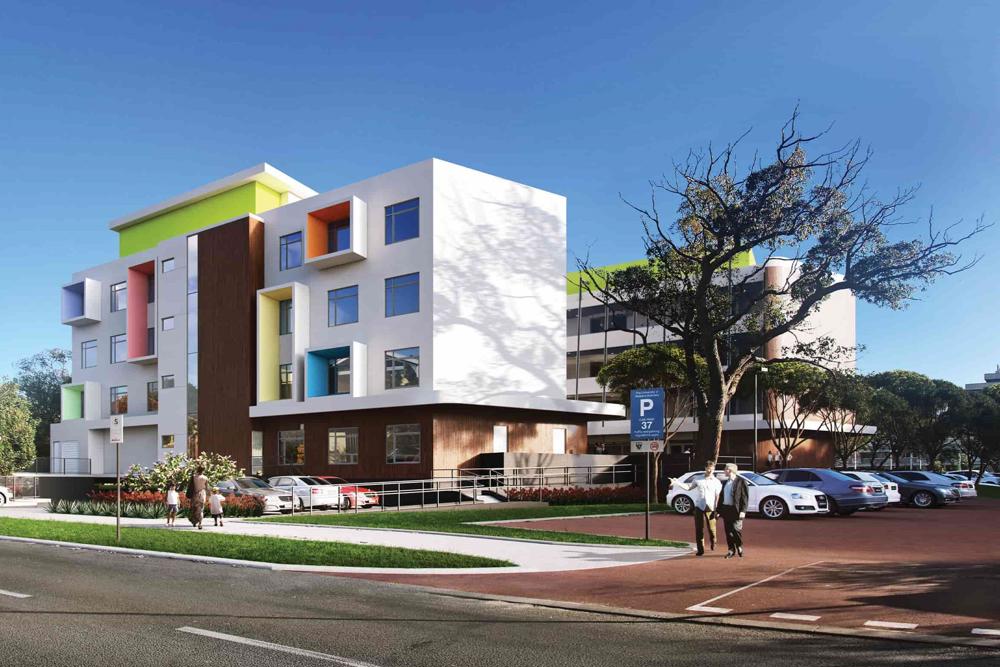
The City of Canning’s first smart park – Wharf Street Basin Next Generation Community Park – in Cannington is now officially open to the public. A pilot project for Western Australia, the multipurpose smart park unites nature with technology, and is equipped with a range of Internet of Things (IoT) sensors to measure, water quality, weather conditions and power use in real-time.
Water Corporation’s operating stormwater basin has been reimagined as a new smart park and is one of the centrepieces of the Canning City Centre Regeneration Program. It aims to integrate critical water infrastructure with the creation of a new public space.
The Next Generation Community Park has free WiFi, smart bins and irrigation, solar power, a small nature playground, an informal education space with a microscope station, a boardwalk along the Wharf Street side of park, colour changeable lighting, a 40m art mural designed and painted by Jade Dolman and Brenton See and a bridge that connects Wharf Street to Leila Street.
A new augmented reality (AR) app, Smart Canning, lets locals be a scientist, play games and learn about stormwater all while using a mobile device in the park. The app is available for free on Google Play Store and the Apple Store.
To increase the biodiversity of the basin, which is already home to Motorbike Frogs and Southwestern Snake-necked Turtles, more than 50 different species of native plants have been planted in the park. Habitat islands for local wildlife have also been created, along with a nutrient stripping wetland system to improve water quality.
City of Canning Mayor Patrick Hall said he is proud for this innovative and collaborative project to call Canning home.
“We’ve worked with Western Australia’s thought leaders and key government agencies in water research, technology, urban redevelopment and landscape architecture. This amazing smart park is the culmination of those efforts,” he said.
“Its design, which creates a benchmark for public spaces, is equally beneficial to the community and the environment, ensures the site has retained its functionality as a stormwater basin, provides an enhanced habitat for wildlife and integrates technologies to monitor the environment.”
Water Corporation Assets Planning and Delivery General Manager Evan Hambleton said Water Corporation was thrilled to contribute to this significant community project through its Drainage for Liveability program.
“While Water Corporation’s drains and basins serve an important functional role in stormwater management, they also have remarkable potential to enhance liveability and community green spaces and it’s wonderful to see this realised in Cannington,” Mr Hambleton said.
Department of Water and Environmental Regulation Director General Mike Rowe added that the park is an exemplar of what can be achieved through a shared vision, collaborative working and a willingness from all parties to embrace innovative approaches.

Image taken at the park. Credit: Dzuks Photography.
“The project is very consistent with the McGowan Government’s vision expressed in the Waterwise Perth Action Plan. It really is an example of sustainability – marrying cultural, educational and artistic aspects with waterwise and environmental benefits,” Mr Rowe said.
“These projects create more liveable, green open spaces in our communities as well as healthier water systems that positively impact on water quality and biodiversity.”
The City of Canning received $1.09 million funding from the Federal Government through the Smart Cities and Suburbs Program; $300,000 from the Water Corporation; and $30,000 from Department of Water and Environmental Regulation to turn Water Corporation’s stormwater basin into a public open space.
Wharf Street Basin Next Generation Community Park was designed by Josh Byrne & Associates and constructed by Environmental Industries. It is located on Wharf Street, Cannington and is part of Canning’s City Centre.












